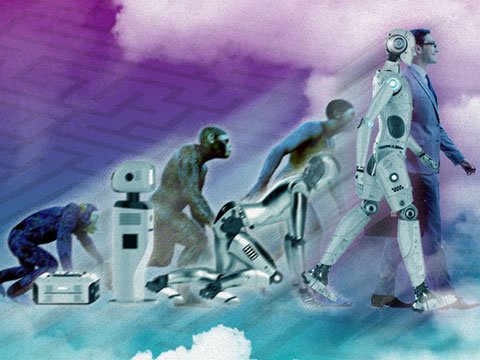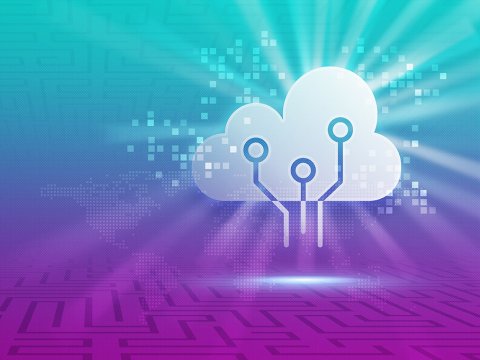Observabilidad en toda la pila: La empresa a bordo
Las organizaciones de TI comprenden su papel vital en el diseño y la entrega de las mejores aplicaciones y servicios para crear experiencias de usuario siempre activas, seguras y excepcionales.
En una era en la que cada decisión tecnológica es también una decisión empresarial estratégica, la observabilidad de la pila completa permite a los equipos de TI obtener un conocimiento más profundo de todo un entorno basado en la telemetría. La capacidad de observación de toda la pila ofrece visibilidad a petición del estado de cada aplicación y punto final de la infraestructura. Los usuarios pueden acceder, buscar y cribar fácilmente grandes cantidades de datos y correlacionar el rendimiento de las aplicaciones con los resultados empresariales.
Más allá de la resolución de problemas, la supervisión y la prevención de incidentes dentro de la pila de TI, la observabilidad también ayuda a que los entornos funcionen de forma más limpia mediante el aprovisionamiento de recursos y la optimización de costes híbridos. La observabilidad de toda la pila permite la automatización y la integración de productos, y con esta mayor visibilidad se consiguen tiempos de respuesta a las amenazas más rápidos. Sin embargo, es la consideración de las necesidades de la empresa y la posterior incorporación de la observabilidad lo que puede priorizar eficazmente lo que importa y ayudar a los equipos de TI a ofrecer resultados de forma coherente.
Antes de unirse a AppDynamics™ como Director de Tecnología, Joe Byrne trabajó como Vicepresidente de Ingeniería en una empresa fintech que desarrolló una solución de software crítica para el negocio de un usuario específico. "Tuvimos una interrupción en la que controlábamos el backend de los servidores, la CPU, la memoria, la red... todo eso, pero no controlábamos la aplicación en sí", explica Byrne. "Resultó que [el problema] era una línea de código que había sido escrita siete años antes por uno de los desarrolladores y que simplemente nunca se activó"
La lección que se llevó Byrne: Es fundamental supervisar la propia aplicación, para "ofrecer una aplicación con una experiencia optimizada." Se convirtió en cliente de AppDynamics, continuando la relación en otra parada de su carrera, Albertsons, la segunda cadena de supermercados más grande de Estados Unidos.
Durante la creación de su primer equipo DevOps, Byrne recurrió de nuevo a AppDynamics para que le ayudara a trasladar a la nube las aplicaciones locales orientadas al cliente de la organización. "AppDynamics podía medir y comprender cómo era el rendimiento antes y después, y compararlo con la nube", explica. Cuando más tarde surgió la oportunidad, Byrne se incorporó a AppDynamics.
La observabilidad de toda la pila ofrece a los clientes la oportunidad de mejorar continuamente los entornos para que sus audiencias tengan las mejores experiencias posibles, lo que se traduce en la confianza de los consumidores.
"En estos entornos típicamente híbridos, cualquiera de las conexiones puede fallar", afirma Byrne. "Tienes que ser capaz de entender eso... y por eso tener un sistema que pueda mirar todos esos datos y ayudarte a entender la causalidad, más rápido puedes entrar ahí en términos de optimización de la aplicación, felicidad de los clientes y... de los empleados que están trabajando en arreglarlo"
Cuando un cliente de una aerolínea necesita rediseñar aplicaciones, crear aplicaciones nativas de la nube y gestionar diferentes cargas de trabajo en un entorno híbrido, AppDynamics supervisa el entorno híbrido para detectar y reparar rápidamente los problemas antes de que afecten a los viajeros.
Con esta gran empresa de transporte, había un número abrumador de puntos de datos a lo largo del recorrido de la experiencia del cliente. El departamento de TI se centró en lo que era más crucial para completar con éxito el recorrido del usuario, pero la parte empresarial probablemente tenía preocupaciones diferentes en relación con los procesos, los ingresos y la puntualidad.
Al proporcionar supervisión en tiempo real de numerosas aplicaciones en toda la infraestructura y la pila tecnológica del cliente, la capacidad de observación de toda la pila permitió ver cómo funcionan los sistemas integrados, y proporcionó la capacidad de detectar y reparar rápidamente problemas que reducen el tiempo medio de resolución.
El resultado final va más allá del hecho de que el tiempo medio de detección de este cliente concreto pasó de horas a menos de 10 minutos. Contar con capacidad de observación también alineó más estrechamente los objetivos de la empresa, aumentando la colaboración entre TI y el negocio, para lograr mejor los resultados deseados para el viajero y el negocio.
Poder integrar la tecnología de la observabilidad en un equipo tecnológico tiene un valor incalculable, añade Byrne. "Puedes [demostrar] visualmente a la empresa en tiempo real el impacto que estás teniendo en su cuenta de resultados con la tecnología que has creado", afirma. "Tener un sitio en la mesa cuando hay conversaciones más amplias sobre estrategia y sobre crecimiento -especialmente después [de la pandemia] que acabamos de atravesar los dos últimos años- es conectar la actividad con resultados empresariales reales."

Informe anual de investigación sobre ciberseguridad 2022
About the Authors

Rackspace Technology Staff - Solve
The Solve team is made up of a curator team, an editorial team and various technology experts as contributors. The curator team: Srini Koushik, CTO, Rackspace Technology Jeff DeVerter, Chief Technology Evangelist, Rackspace Technology The editorial team: Gracie LePere, Program Manager Royce Stewart, Chief Designer Simon Andolina, Design Tim Mann, Design Abi Watson, Design Debbie Talley, Production Manager Chris Barlow, Editor Tim Hennessey Jr., Writer Stuart Wade, Writer Karen Taylor, Writer Meagan Fleming, Social Media Specialist Daniel Gibson, Project Manager
Read more about Rackspace Technology Staff - SolveRelated Topics



